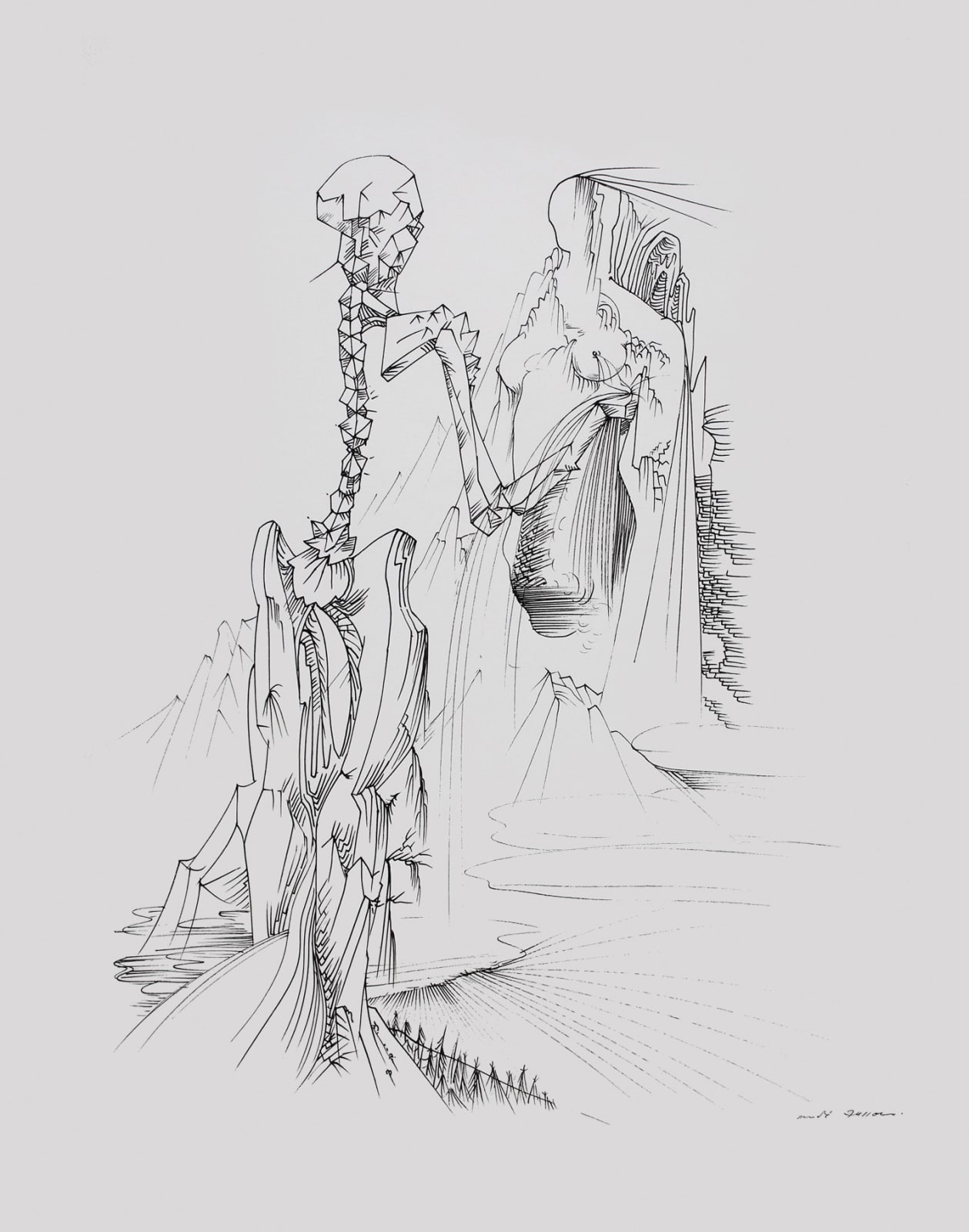André Masson French, 1896-1987
There is something telluric at work in the art of André Masson, a visionary artist who both frightens and fascinates. The literary aspect of André Masson's enormous body of work (paintings, engravings, illustrations) is what makes it so unique. Myth and man occupy a central place in it, so keen was the artist to depict figures embodying the forces of nature and the different facets of the human condition. What animates Masson in the depths of his being is a metaphysical concern about human destiny. André Masson's art is nourished by his interest in Rimbaud, the German Romantics, Sade, and above all Nietzsche and Heraclitus.
On his return from Spain at the end of 1936, André Masson rejoined André Breton's Surrealist group, and took part in the group's International Exhibitions in Paris and London in 1938. Faced with the rise of fascism, and hastened by the Spanish Civil War, Masson held the belief of the Greek stoic philosophers in an eternal return of things. Settling in Lower Normandy in 1939, Masson declared that he was ‘taken back by the poetry of the forest’. But he adopted the posture of a hermit philosopher, that of Heraclitus as described by Nietzsche - ‘the non-consideration of present and instantaneous things making up the essence of the great philosophical nature’.
Mythology was omnipresent in his work during this period: the Labyrinth, the Minotaur, Ariadne and Theseus, Pasiphae... Like Jung, who published his work on archetypes at this time, Masson believed in myth as a manifestation of the universal unconscious. The artist worked on his Mythologies, a work he considered to be his swan song. The mythical impetus of these large drawings blends with the quest for a universal principle of nature, especially metamorphosis and genitor eroticism. Dans le pur néant shows the desire, the meeting of a mineral couple, gigantic, which feeds the continuous flow of an unfinished world, in perpetual becoming. In this great mythological nature, the plant, the mineral and the human intertwine in a kind of osmosis, a wedding where everything transforms and germinates. As in German Romanticism, especially with Goethe and Novalis, nature is perceived as a supreme truth.
Provenance
Studio of the artistBucholz Gallery, New-York
Collection Yves de Fontbrune, Paris (patron et éditeur des Cahiers d’art et collectionneur)
Succession Yves de Fontbrune, Paris
Expositions
New-York, Bucholz Gallery, (Curt Valentin)Paris, Galerie Louise Leiris, "André Masson: Dessins 1922-1960", octobre-novembre 1960, n°39 (illustré).
"Sous le Signe de Bataille: Masson. Fautrier. Bellmer", Musée Zervos, Vézelay, 27 juin - 15 novembre 2012, ill. en p. 21.
Literature
André Masson, Mythology of Being. A Poem. New York, Wittenborn and Company, 1942. Eight pen and ink drawings and a frontispiece by André Masson. Planche I : Dans le pur néant / à la cime de l’être. (traduction anglaise par Eugène Iolas).
André Masson, "Mythologies", Paris, 1946, p. 37 (ill.)
Michel Leiris et Georges Limbour, "André Masson and his universe", Genève, 1947, p. 146 (ill.)
Clark V. Poling, "André Masson and the Surrealist self", Yale University Press, 2008, p. 142
